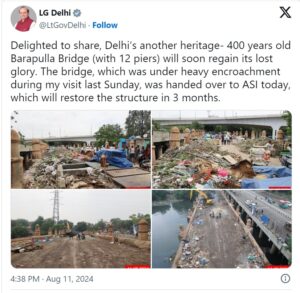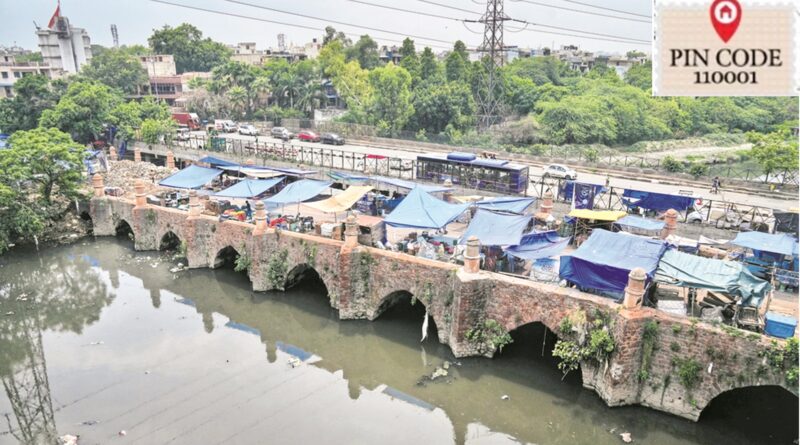The historic 400-year-old Barapulla Bridge in Delhi’s Nizamuddin area will be restored by the Archaeological Survey of India (ASI) within three months, according to Raj Niwas officials. The assurance was given by the ASI’s director general during a site visit by Delhi Lieutenant Governor V.K. Saxena, who reviewed the progress of the restoration work.
This visit marked Saxena’s second inspection of the Barapulla Bridge within a week, with the first visit occurring on August 4.
The Barapulla Bridge had been in a decrepit state, heavily encroached upon, and had become a dumping ground for debris and garbage from the nearby localities, according to the officials.

Saxena directed the removal of encroachments and restoration of the Barapulla Bridge in a mission mode. Local residents and representatives have also supported this initiative. The 200-meter-long bridge was handed over to the Archaeological Survey of India (ASI) on Sunday for the restoration work.
During his visit, Saxena was accompanied by the Delhi Chief Secretary and the ASI Director General. The ASI official assured that the bridge would be fully restored within three months. The restoration work will maintain the originality of the structure and include proper lighting upon completion.
Saxena praised the joint efforts of various agencies, including the Municipal Corporation of Delhi, Public Works Department, Irrigation and Flood Control Department, Railways, and ASI, for their role in removing encroachments and desilting the drain under the bridge. The encroachments have been cleared within a week, and desilting is ongoing. Restoration work by the ASI will commence once the desilting is complete.
The Barapulla Bridge, built by Minar Banu Agha under Emperor Jehangir’s reign around 400 years ago, is named “Barapulla” due to its 12 piers and 11 arches. Built in 1628, it was once a beautiful and significant bridge in Delhi, facilitating Mughal travel between Agra and key sites like Nizamuddin Dargah and Humayun’s Tomb.
